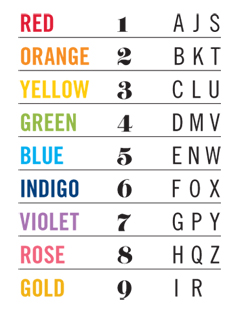

It is the votive stele for a boy who won a competition in singing. Ī headstone found at the Temple of Artemis at Sparta Orthia is a 2nd-century AD example of isopsephic elegiac verse. Which translates to: "One line is made equal in number to one, not two to two for I no longer approve of long epigrams." Here each line totals 4111. In another of his distichs, the hexameter line is equal in number to its corresponding pentameter:

Which translates to: "The muse of Leonidas of the Nile offers up to thee, O Caesar, this writing, at the time of thy nativity for the sacrifice of Calliope is always without smoke: but in the ensuing year he will offer up, if thou wilt, better things than this." Here the sum of both the first and second distich is 5699. The Greek Neron Kaisar ( Nero Caesar in Latin/English) when transliterated into Hebrew gematria equals "six hundred sixty-six".Īlso in the 1st century AD, Leonidas of Alexandria created isopsephs, epigrams with equinumeral distichs, where the first hexameter and pentameter equal the next two verses in numerical value. Let him that hath understanding count the number of the beast: for it is the number of a man and his number is Six hundred threescore and six." The word rendered "count", ψηφισάτω, psephisato, has the same "pebble" root as the word isopsephy. A famous example is 666 in the Biblical Book of Revelation (13:18): "Here is wisdom. "Nero, Orestes, Alcmeon their mothers slew. Suetonius, writing in 121 AD, reports a political slogan that someone wrote on a wall in Rome: One reads Φιλω ης αριθμος ϕμε, " I love her whose number is 545." Another says, " Amerimnus thought upon his lady Harmonia for good. He asks: "Given the verse: ΑΡΤΕΜΙΔΟΣ ΚΛΕΙΤΕ ΚΡΑΤΟΣ ΕΞΟΧΟΝ ΕΝΝΕΑ ΚΟΥΡΑΙ ( 'Nine maidens, praise the glorious power of Artemis'), what does the product of all its elements equal?" More conventional are the instances of isopsephy found in graffiti at Pompeii, dating from around 79 AD. It is just a short step from using letters of the alphabet in everyday arithmetic and mathematics to seeing numbers in words, and to writing with an awareness of the numerical dimension of words.Īn early reference to isopsephy, albeit of more-than-usual sophistication (employing multiplication rather than addition), is from the mathematician Apollonius of Perga, writing in the 3rd century BC. For instance in Ancient Greece, Greek numerals used the alphabet. Until Arabic numerals were adopted and adapted from Indian numerals in the 8th and 9th centuries AD, and promoted in Europe by Fibonacci of Pisa with his 1202 book Liber Abaci, numerals were predominantly alphabetical. History Įxample of isopsephy from the Sanctuary of Artemis Orthia, 2nd century AD A gematria of Latin script languages was also popular in Europe from the Middle Ages to the Renaissance, and its legacy remains in code-breaking, numerology, and Masonic symbolism today (see arithmancy).

It is also related to the ancient number systems of many other peoples (for the Arabic alphabet version, see Abjad numerals). Isopsephy is related to gematria: the same practice using the Hebrew alphabet. The early Greeks used pebbles arranged in patterns to learn arithmetic and geometry, which corresponds to psephos or "pebble" and "counting" in the term. The total number is then used as a metaphorical bridge to other words evaluating the equal number, which satisfies isos or "equal" in the term. Isopsephy ( / ˈ aɪ s ə p ˌ s ɛ f i/ ἴσος isos meaning "equal" and ψῆφος psephos meaning "pebble") or isopsephism is the practice of adding up the number values of the letters in a word to form a single number. Practice of adding up number values of letters in a word to form a single number


 0 kommentar(er)
0 kommentar(er)
